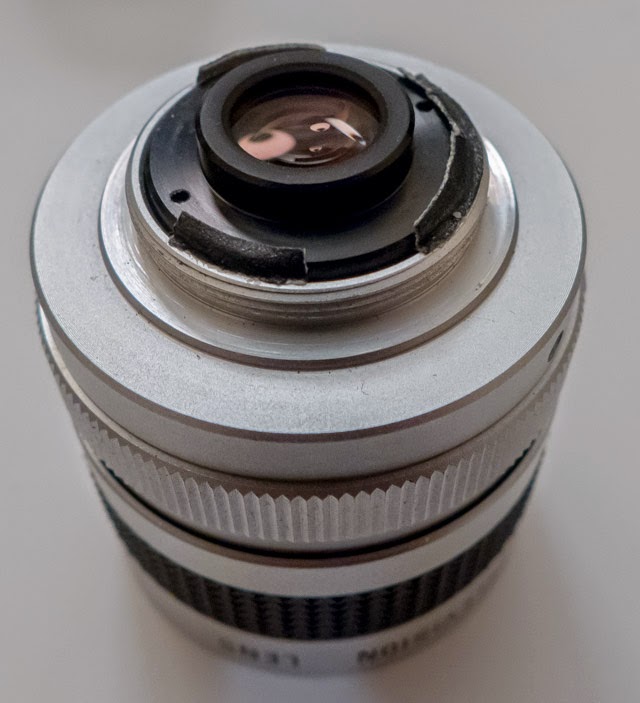Some months ago, I bought my first C-mount lens, a 25mm f/1.4, which was fun to play with for a day, but quickly found its way in the bag to stay there.
Recently, I came across 2 more lenses which caught my attention, ad 16mm f/1.6 and a 35mm f/1.7.
Here is a photo of my C-mount lenses, the MFT adapter and 2 macro-rings, which came with the 35mm lens.
 |
| 16mm, 25mm and 35mm lenses, respective adapter and macro-rings |
The adaptation of the Fujian, using the adapter ring shown above, was no problem at all. Actually, the moves beyond the infinity focus.
The 25mm I did discuss previously on this blog, so I will skip this particular lens here.
Finally, the 16mm Cosmicar... Honestly, I had my issues with this lens!
It is clearly visible from the image above, the Comsicar is the biggest of them all. Not sure why the lens was build that way, since the front-element is hidden deeply inside the huge lens-hood.
Using the shown adapter, the Cosmicar could be focused on extremely proximate objects only, meaning, it did not screw all the way into the adapter, I figure.
At this point in time, I thought I just wasted €20, made my peace with it a put the lens aside.
For an unapparent reason, I picked the thing up again and had a look if it could not be modified (to serve whatever purpose... e.g. put in front of a webcam, for long-exposure astro-stuff.
When looking at the back of the lens, it seems that the rear lens group can be unscrewed. There is not actual image of the unscrewed lens group, sorry! The process of unscrewing the group took a long way, which gave me the idea, that the group could be fixed at a place where the lens would focus on my MFT sensor. After some trial and error, I found the infinity focus position.
For the time being, said infinity focus position is fixed by small stripes of gaffer's tape stuffed in the threads.
 |
| Cosmicar 16mm f/1.6 with displaced rear lens group |
Optically, and in terms of handling, the lens is fine. The equivalent 32mm are too short for comfort, however. The lens shows black vignetting, indicating that the image is too small for the sensor.
Olympus added a "digital tele-converter" function to their E-PM2, which I used for the tests. Here, the lens displays a decently flat image over the entire frame. When shooting in RAW, this does not help at all, in contrast to shooting video.
The Cosmicar being a very smooth lens what controls are concerned, will probably be the best of the bunch for video work, provided Olympus' digital tele-converter is used.
For use with the BMPCC, which is provided with a smaller sensor, this lens my just be the hero... the 20 bucks hero that is.







